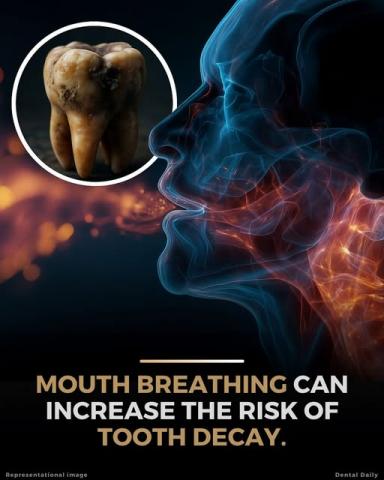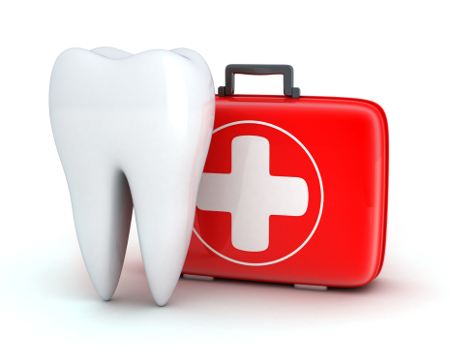Strong Teeth, Fresh Breath, Brighter You.
How Mouth Breathing is Secretly Damaging Filipino Smiles
Topics teeth:
As dentists across the Philippines, we often see a common yet overlooked habit that silently wreaks havoc on oral health: chronic mouth breathing. Many dismiss it as a simple preference or a stuffy nose, but the science is clear—breathing through your mouth instead of your nose is a primary driver of cavities, gum disease, and even long-term changes in facial structure, especially in children.
This isn't just about dry mouth; it's about disrupting the entire ecosystem of your mouth.
The Science: Why Your Nose is Nature's Air Filter and Humidifier
Your nose is perfectly designed for breathing. It filters allergens, warms the air, and adds moisture to protect your lungs and throat. Crucially, nasal breathing promotes healthy saliva flow.
Saliva is your mouth’s natural defense system. It:
-
Neutralizes acids produced by cavity-causing bacteria.
-
Washes away food particles and sugars.
-
Contains minerals like calcium and phosphate that repair early tooth damage (remineralization).
When you breathe through your mouth, this system breaks down.
The Domino Effect of Mouth Breathing on Your Teeth and Gums
The provided sources highlight a direct link. Let's break down the critical damage:
-
The Cavity Cascade: A 2022 study by Ushanthika T. and Sowmya K. confirmed that mouth breathers have a significantly higher prevalence of dental caries. Why? The constant airflow dries out the saliva. With this protective shield diminished, bacterial acids run rampant, eroding enamel and creating cavities at an accelerated rate.
-
Fueling Gum Inflammation and Bad Breath: A dry mouth is a breeding ground for the bacteria that cause gingivitis (gum inflammation) and persistent bad breath (halitosis). Without saliva's cleansing action, plaque builds up faster and harder along the gumline, leading to redness, swelling, and bleeding.
-
The Hidden Danger for Filipino Children: Altered Facial Development
This is the most critical, long-term consequence. A 2024 study in Braz Oral Res. links mouth breathing to anterior caries, but the damage goes deeper. In growing children, chronic mouth breathing can literally reshape their face and jaws. It often leads to:-
Long, narrow facial structure ("long-face syndrome" or "adenoid face").
-
Gummy smiles and dental crowding.
-
Poor jaw alignment, almost guaranteeing the future need for orthodontic treatment like braces.
-
Critical Thinking: Why is This a Pressing Issue in the Philippines?
We must look beyond the habit to its root causes, which are often medical and highly prevalent here:
-
Allergic Rhinitis: Widespread due to tropical climate, dust, and pollution, leading to chronically stuffy noses.
-
Enlarged Adenoids and Tonsils: A very common issue in Filipino children that physically blocks the nasal airway.
-
Habitual Posture: Sometimes, it starts during a cold and becomes a hard-to-break habit even after the congestion is gone.
Innovative & Actionable Advice: It's More Than "Just Close Your Mouth"
Telling someone to "breathe through their nose" is ineffective if there's a physical obstruction. Here is a proactive, multi-step approach:
-
Identify the Root Cause: The First Step is Diagnosis.
-
For Children: If your child snores, sleeps with their mouth open, or is a restless sleeper, consult not just a dentist, but an ENT (Ear, Nose, and Throat Specialist). Addressing enlarged tonsils or adenoids can be life-changing.
-
For Adults: Consult an ENT or an allergist to manage chronic sinus issues or allergies.
-
-
Innovate Your Nighttime Routine.
-
Hydration is Key: Keep a glass of water by your bed, but avoid sugary drinks.
-
Use a Humidifier: Adding moisture to the air in your bedroom can reduce mouth dryness overnight.
-
Practice Nasal Breathing: Consciously practice nasal breathing during the day. Some find hypoallergenic nasal strips helpful at night to open nasal passages.
-
-
Partner with Your Dentist for a Proactive Defense.
-
High-Fluoride Products: Ask your dentist about high-fluoride toothpaste or mouth rinses to strengthen enamel against acid attacks.
-
More Frequent Cleanings: Mouth breathers may need professional cleanings every 4 months instead of 6 to manage accelerated plaque buildup.
-
Early Orthodontic Evaluation: Have your child assessed by an orthodontist or pediatric dentist by age 7 to monitor for developmental issues linked to mouth breathing.
-
Expert Verdict
Mouth breathing is not a simple bad habit; it's a clinical sign of an compromised airway with serious consequences for your oral health. The Filipino spirit is resilient, but our health requires proactive care. By understanding the profound link between how we breathe and the health of our smiles, we can take targeted action—seeking the right medical help and adopting a more vigilant dental care routine.
Protect your smile, the most Filipino of assets. Breathe through your nose, and if you can't, let that be your signal to seek expert advice.





